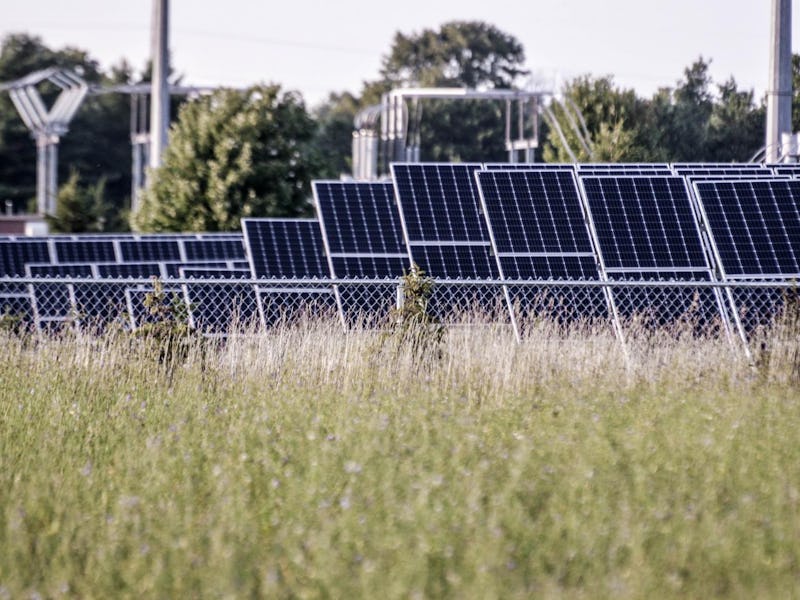Offsetting Just One Coal Plant's Emissions Requires a Maryland-Sized Forest
It's a big improvement.

If we want to have a fighting chance of keeping the planet’s average temperature within 2-3 degrees celsius above pre-industrial levels, the policy platforms have traditionally emphasized a two-pronged strategy: technology that can power civilization without emitting harmful emissions and technology that can remove the emissions that are already there. But this assessment might be misguided.
That’s according to a new study from researchers at Michigan Technological University, which suggests that research efforts are best directed at figuring out more efficient ways to harvest energy from the sun, and cleaner ways to manufacture solar panels for the mass market; not, as some plans have argued in the past, trying to make coal plants less environmentally destructive through carbon capturing.
The reason is because coal emissions might be too great to be captured in meaningful amounts. In fact, a single gigawatt coal fired plant requires a new forest the size of the state of Maryland for its carbon emissions to be offset, according to the new findings. To power the country using coal, and clean the air, we’d need to cover about 89 percent of the United States with average-sized forests.
Coal requires 13 times as much land devoted to carbon capturing and sequestration than the manufacturing of solar panels.
Taken together, that’s about 13 times the size of the new forest you’d need offset the similar emissions generated by the manufacturing of solar panels. That’s particularly notable, because the process of making solar panels isn’t nearly as clean as it could be.
“It just makes no sense whatsoever to use coal when you have solar available,” said Joshua Pearce, a professor of materials science and engineering Michigan Tech who worked on the study, in a statement. The team’s findings were published September 7 in Scientific Reports.
The project is further evidence that efforts to mitigate climate change by re-capturing the emissions from coal plants is a little bit like putting a bandaid on a bullet wound, despite the fact that the vast majority of the paths considered by the Intergovernmental Panel on Climate Change for maintaining global temperature averages includes some form of negative carbon technology.
The findings of the Michigan State study, according to the authors, suggests that this strategy might be misguided.
A winning renewable energy strategy will focus on making solar panels better, not making coal less destructive, a new study finds.
Their assessment — which relied on more than 100 data sources — may have ultimately been too kind to coal plants for a couple of different reasons. Their analysis leaves aside non carbon emissions that are still harmful, for example sulfur dioxide and nitrous oxide, which the authors note contribute to an estimated 52,000 premature deaths each year.
But perhaps most interestingly, their analysis doesn’t take into account the emissions from a cleaner solar panel manufacturing process that produces more efficient solar panels. As research in these two areas continues, the spread is sure to continue growing. If we want to have a real shot at a renewable energy future, that’s where our focus should lie; as opposed to finding ways to clean up after our coal use.
Better, more efficient solar panels seems likely. In August, some researchers at the UCLA Samueli School of Engineering developed a new method for making commonly-used solar cells far more efficient by spraying them with a second “dual layer” of perovskite, a combination of iodine and lead that’s good at harvesting energy from sunlight. Those researchers estimate that the new method could reduce solar energy costs by about one fifth.